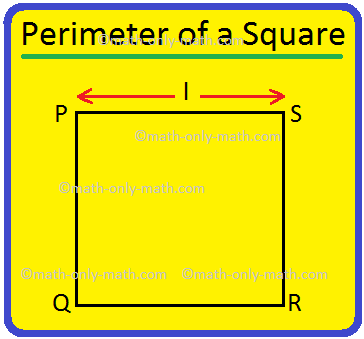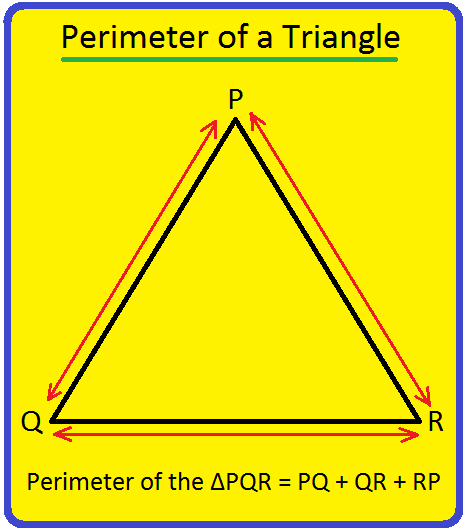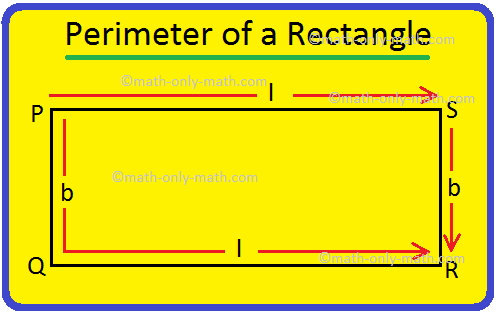Induction Proof
In math induction proof we will work on some examples using mathematical induction.
Induction proof is a mathematical method of proving a set of formula or theory or series of natural numbers. Induction proof is used from the theory of mathematical induction which is similar to the incident of fall of dominoes. When we push a domino in a set of dominoes the falling of first domino leads to the falling of other dominoes. So if there is a set of infinite dominoes then a falling effect of single domino will lead to the falling of other dominoes one by one. Now to prove this incident we can say the first domino falls to second and the second will fall to third and this way others will fall. Similarly in induction proof for infinite series of n numbers set where P (n) is the set property, we do not need to prove the property for all natural numbers. We prove it for two instances. First is for P (0) or P (1) and this step is called base step. In the second step we need to assume first that the property P (k) is true which is called induction hypothesis. By using inductive hypothesis we need to prove the P (k+1) is true and this step is called inductive step. This is how in induction proof for property P (n), we need to prove it for P (0) or P (1) and P (k+1) and then it can be stated that the property statement is true or holds for all the natural numbers.
Now we will try to understand induction proof from an example. First we take a property of sum of n natural numbers.
1 + 2 + 3 + ……. + n = \(\frac{n(n + 1)}{2}\)
The above set of natural numbers is property P (n) which is simply a formula of sum of n natural numbers. By using induction proof technique we need to prove that this formula holds true for all natural numbers. As stated before the first step is base step P (1).
For P (1),
LHS = 1
RHS = \(\frac{1(1 + 1)}{2}\) = 1.
So, LHS = RHS.
It is proved that P (1) is true.
Now in second step by using induction hypothesis of mathematical induction we assume P (k) is true.
1 + 2 + 3 + ……. + k = \(\frac{k(k + 1)}{2}\)
We need to prove P(k + 1) is true by using P (k) true.
For P(k + 1),
LHS = 1 + 2 + 3 + ……. + k + (k + 1)
= \(\frac{k(k + 1)}{2}\) + (k+1) ………by using induction hypothesis
= \(\frac{(k + 1)(k + 2)}{2}\)
= \(\frac{(k + 1)((k + 1) + 1}{2}\) = RHS for P(k + 1)
P(k + 1) is true, whenever P(k) is true.
Thus P(1) is true and P(k + 1) is true whenever p(k) is true.
Hence, by the principle of mathematical induction, P(n) is true for all n ∈ N.
Mathematical Induction - Problems with Solutions (induction proof):
1. Using the principle of mathematical induction, prove that n(n + 1)(n + 5) is a multiple of 3 for all n ∈ N.
Solution:
Let P(n): n(n + 1)(n + 5) is a multiple of 3.
For n = 1, the given expression becomes (1 × 2 × 6) = 12, which is a multiple of 3.
So, the given statement is true for n = 1, i.e. P(1) is true.
Let P(k) be true. Then,
P(k): k(k + 1)(k + 5) is a multiple of 3
⇒ K(k + 1)(k + 5) = 3m for some natural number m, ... (i)
Now, (k + 1l)(k + 2)(k + 6) = (k + 1)(k + 2)k + 6(k + 1)(k + 2)
= k(k + 1)(k + 2) + 6(k + 1)(k + 2)
= k(k + 1)(k + 5 – 3) + 6(k + 1)(k + 2)
= k(k + 1)(k + 5) – 3k(k + 1) + 6(k + 1)(k + 2)
= k(k + 1)(k + 5) + 3(k + 1)(k +4) [on simplification]
= 3m + 3(k + 1 )(k + 4) [using (i)]
= 3[m + (k + 1)(k + 4)], which is a multiple of 3
⇒ P(k + 1): (k + 1 )(k + 2)(k + 6) is a multiple of 3
⇒ P(k + 1) is true, whenever P(k) is true.
Thus, P(1) is true and P(k + 1) is true, whenever P(k) is true.
Hence, by the principle of mathematical induction, P(n) is true for all n ∈ N.
Induction Proof
2. Using the principle of mathematical induction, prove that (n² + n) is even for all n ∈ N.
Solution:
Let P(n): (n² + n) is even.
For n = 1, the given expression becomes (1² + 1) = 2, which is even.
So, the given statement is true for n = 1, i.e., P(1)is true.
Let P(k) be true. Then,
P(k): (k² + k) is even
⇒ (k² + k) = 2m for some natural number m. ... (i)
Now, (k + 1)² + (k + 1) = k² + 3k + 2
= (k² + k) + 2(k + 1)
= 2m + 2(k + 1) [using (i)]
= 2[m + (k + 1)], which is clearly even.
Therefore, P(k + 1): (k + 1)² + (k + 1) is even
⇒ P(k + 1) is true, whenever P(k) is true.
Thus, P(1) is true and P(k + 1) is true, whenever P(k) is true.
Hence, by the principle of mathematical induction, P(n)is true for all n ∈ N.
Induction Proof
More Examples on math Induction Proof
3. Using the principle of mathematical induction, prove that(1 + x)n ≥ (1 + nx)for all n ∈ N,where x > - 1.
Solution:
Let P(n): (1 + x) )n ≥ (1 + nx).
For n = 1, we have LHS = (1 + x) )1 = (1 + x),and
RHS = (1 + 1 ∙ x) = (1 + x).
Therefore LHS ≥ RHS is true.
Thus, P(1) is true.
Let P(k) is true. Then,
P(k): (1 + X)k ≥ (1 + kx). …….. (i)
Now,(1 + x)k + 1 = (1 + x)k (1 + x)
≥ (1 + kx)(1 + x) [using (i)]
=1 + (k + 1)x + kx2
≥ 1 + (k + 1)x + x [Since kx2 ≥ 0]
Therefore P(k + 1): (1 + x)k + 1 ≥ 1 + (k + 1)x
⇒ P(k +1) is true, whenever P(k) is true.
Thus, P(1) is true and P(k + 1) is true, whenever P(k) is true. Hence, by the principle of mathematical induction, P(n) is true for all n ∈ N.
Induction Proof
4. Using the principle of mathematical induction, prove that n < 2n for all n ∈ N.
Solution:
Let P(n): n <2n.
When n = 1, LHS = 1 and RHS = 21 = 2.
Clearly, 1 < 2.
Thus, P(n) is true for n = 1, i.e., P(1) is true.
Let P(1) be true. Then,
P(k): k < 2k.
Now, k < 2k ⇒ 2k < 2k + 1
⇒ (k + k) < 2k + 1
⇒ (k + 1) ≤ (k + k) < 2k + 1 [Since 1 ≤ k]
⇒ (k + 1) < 2k + 1
Therefore P(k + 1): (k + 1) < 2k + 1
⇒ P(k + 1) is true, whenever P(k) is true.
Thus, P(1) is true and P(k + 1) is true, whenever P(k) is true.
Hence, by the principle of mathematical induction P(n) is true for all n ∈ N.
Induction Proof
5. Using the principle of mathematical induction, prove that
(1² + 2² + …... + n²) > n³/3 for all values of n ∈ N.
Solution:
Let P(n): (1² + 2² + ….. + n²) > n³/3.
When = 1, LHS = 1² = 1 and RHS = 1³/3 = 1/3.
Since 1 > 1/3, it follows that P(1) is true.
Let P(k) be true. Then,
P(k): (1² + 2² + ….. + k²) > k³/3 .... (i)
Now, 1² + 2² + ..... + k² + (k + 1)²
= {1² + 2² + ..... + k² + (k + 1)²} + (k + 1)²
> k³/3 + (k + 1)² [using (i)]
= 1/3 ∙ (k³ + 3 + (k + 1)²) = 1/3 ∙ {k² + 3k² + 6k + 3}
= 1/3[k³ + 1 + 3k(k + 1) + (3k + 2)]
= 1/3 ∙ [(k + 1)³ + (3k + 2)]
> 1/3(k + 1)³
P(k + 1): 1² + 2² + ….... + k² + (k + 1) ² > 1/3 ∙ (k + 1)³.
P(k + 1) is true, whenever P(k) is true.
Thus P(1) is true and P(k + 1) is true whenever p(k) is true.
Hence, by the principle of mathematical induction, P(n) is true for all n ∈ N.
6. Using the principle of mathematical induction, prove that
(2n + 7) < (n + 3)² for all values of n ∈ N.
Solution:
Let P(n): (2n + 7) < (n + 3)²
When = 1, LHS = (2 × 1 + 7) = 9 and RHS = (1 + 3)² = 4² = 16.
Clearly, 9 < 16.
Thus, P(n) is true for n = 1, i.e., P(1) is true.
Let P(k) be true. Then
P(k): (2k + 7) < (k + 3)². ... (i)
Now, 2(k + 1) + 7 = (2k + 7) + 2
< (k + 3)² + 2 = (k² + 6k + 11) [using(i)]
< (k² + 8k + 16) = (k + 4)² = (k + 1 + 3)².
P(k + 1): 2(k + 1) + 7 < (k + 1 + 3)².
P(k + 1) is true, whenever P(k) is true.
Thus, P(1) is true and P(k + 1) is true, whenever P(k) is true.
Hence, by Principle of Mathematical Induction, P(n) is true for all n ∈ N.
From the above examples it can be understood that induction proof can be divided into four parts.
1) The Set P (n) that we need to prove.
2) The base step P (1).
3) Induction Hypothesis or the assumption step for P (k).
4) Inductive step where P (k+1) is to be proved.
Induction proof is used to prove general structures such as trees termed as Structural Induction. This structural induction is used in computer science like recursion. Also for correctness proofs induction proof is used for programs in computer science.
● Mathematical Induction
Problems on Principle of Mathematical Induction
Proof by Mathematical Induction
11 and 12 Grade Math
From Induction Proof to HOME PAGE
Didn't find what you were looking for? Or want to know more information about Math Only Math. Use this Google Search to find what you need.
Recent Articles
-
Perimeter of a Square | How to Find the Perimeter of Square? |Examples
Apr 25, 24 05:34 PM
We will discuss here how to find the perimeter of a square. Perimeter of a square is the total length (distance) of the boundary of a square. We know that all the sides of a square are equal. Perimete… -
Perimeter of a Triangle | Perimeter of a Triangle Formula | Examples
Apr 25, 24 05:13 PM
We will discuss here how to find the perimeter of a triangle. We know perimeter of a triangle is the total length (distance) of the boundary of a triangle. Perimeter of a triangle is the sum of length… -
Perimeter of a Rectangle | How to Find the Perimeter of a Rectangle?
Apr 25, 24 03:45 PM
We will discuss here how to find the perimeter of a rectangle. We know perimeter of a rectangle is the total length (distance) of the boundary of a rectangle. ABCD is a rectangle. We know that the opp… -
Dividing 3-Digit by 1-Digit Number | Long Division |Worksheet Answer
Apr 24, 24 03:46 PM
Dividing 3-Digit by 1-Digit Numbers are discussed here step-by-step. How to divide 3-digit numbers by single-digit numbers? Let us follow the examples to learn to divide 3-digit number by one-digit nu… -
Symmetrical Shapes | One, Two, Three, Four & Many-line Symmetry
Apr 24, 24 03:45 PM
Symmetrical shapes are discussed here in this topic. Any object or shape which can be cut in two equal halves in such a way that both the parts are exactly the same is called symmetrical. The line whi…





